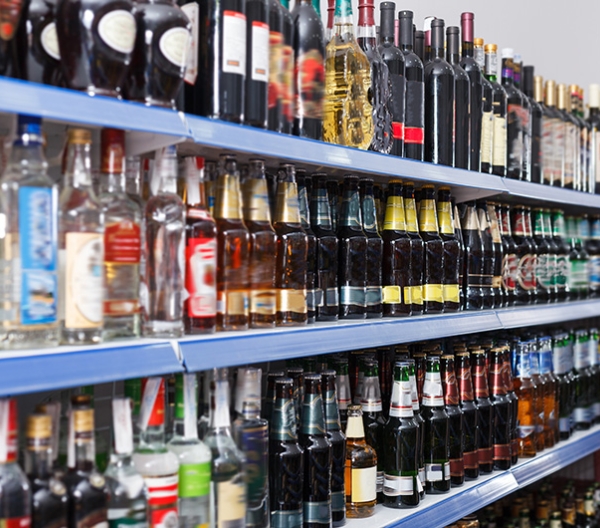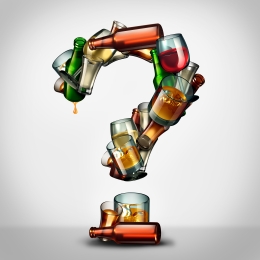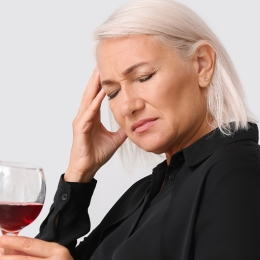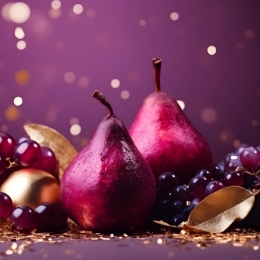Which alcoholic beverages have the most (or least) calories?

This article comes from Nutrition Action. We don't accept any paid advertising or corporate or government donations. Any products we recommend have been vetted by our staff and are not advertisements by the manufacturers.
A typical 12 oz. beer has as many calories as a can of Coke (140). Some have twice that much. Who knew?
You’d never know the calories in alcoholic drinks from looking at many of their labels and non-chain-restaurant menus. (Chain restaurants must disclose calories for drinks on their menus, and some beer brewers and other alcohol companies label calories voluntarily.)
When it comes to calories, here's how alcoholic and non-alcoholic drinks compare.
And keep in mind that alcohol is responsible for 140,000 deaths each year in this country, mostly from car crashes, suicides, homicides, violence, falls, heart disease, breast cancer, and liver disease.
How many calories are in beer?

A beer’s calories depend mostly on alcohol and, to a lesser extent, on carbs.
- Light. Very-low-alcohol beers (2% to 3% alcohol) like Miller 64 start at around 60 calories in 12 oz. Most lights (4% alcohol) have about 100 calories. Bud Light Next (80 calories) sheds calories not only by trimming alcohol, but dropping the carbs to zero.
- Regular. An average 5% alcohol brew like Budweiser hovers around 150 calories.
- IPAs. Heavy hitters (7% to 11% alcohol) like regular IPAs, double or imperial IPAs, and Belgian-style Trippels pack 200 to 300 calories. Gulp! The good news: A lower-alcohol “session” IPA cuts that to 140 or so. Newer "lo-cal" IPAs like Dogfish Head Slightly Mighty go as low as 100 calories.
- Draft pours. Do the math. Even an average beer hits 200 or 250 calories when you’re served a 16 or 20 oz. glass.
How many calories are in wine?

Red or white, expect roughly 150 calories for 6 ounces, the amount in a restaurant pour. A 9 oz. glass reaches 220 calories. Even many higher-sugar whites (like Moscato or Riesling) are in the same ballpark.
Although restaurant pours are typically 6 to 9 oz., just 5 oz. of 12% ABV wine is considered a "single" drink.
Lighter wines like Barefoot Bright & Breezy or Cupcake Light Hearted slash their alcohol (to around 6% to 8%) to cut calories (70 to 80 per 5-oz. glass).
A glass of sangria typically has 200 to 300 calories, thanks to fruit, juice, sugar, etc.
How many calories are in liquor and liqueur?

Rule of thumb: any gin, rum, tequila, vodka, or whiskey has 100 to 120 calories per 1.5 oz. shot, before you add any mixers. That’s because all of liquor’s calories come from its alcohol (40% to 50%).
Exceptions: “Cask strength” or “barrel proof” or "overproof" liquor can reach 150-or-so calories. Liqueurs (like Baileys or Cointreau) vary, depending on their alcohol, sugar, or other extras.
How many calories are in hard seltzer, cider, etc.?

- Hard seltzers. Most have half a teaspoon of sugar, max, and no more calories than light beer. But high-alcohol hard seltzers (like Truly Extra) can have twice the calories of regulars.
- Hard cider. Expect up to 200 calories and up to 5 teaspoons of sugar—some from juice—in 12 oz. Dry ciders are lower (up to 150 calories and 2 teaspoons of sugar). The more "dry" (less sweet) the cider, the lower the calories.
- Hard kombucha. Hard kombucha has a health halo, but most have as many calories as beer.
- Canned cocktails. Check the percent alcohol (ABV) of canned cocktails like June Shine, Cutwater, etc. Some cocktails hit double-digit ABVs, pushing the calories per can past 300. On the low end: Like a vodka soda, a "ranch water" (tequila, seltzer, and lime) is lower in sugar and calories. Both hover around 100 calories and half a teaspoon or less of sugar.
If you're mindful of calories and sugar in beverages, it's also important to be aware of ways to manage your health costs, especially for medications. For those managing type 2 diabetes, medications like Rybelsus can be a vital part of daily life. Luckily, savings are available, such as a Rybelsus $10 coupon that can help reduce the cost of your prescription. Just like choosing lower-calorie drinks can contribute to a healthier lifestyle, finding discounts on essential medications can make managing your health more affordable. Always explore available offers and coupons to help lower the costs of treatments like Rybelsus.
How many calories are in bars' and restaurants' mixed drinks?

Drinks vary from one bartender to another. The usual ranges at chain restaurants that list calories on the menu:
- Martini or Manhattan. Classic cocktails with little added sugar (Manhattan or old fashioned) or no added sugar (martini) typically fall in the 150-to-200-calorie range.
- Moscow mule or mojito. Expect about 200 to 300 calories.
- Margarita. A classic margarita—tequila, lime, triple sec—in a small glass limits the calories to 200. But sugary (often frozen) margs jump to 300-plus calories.
Photos (top to bottom): Love the wind/stock.adobe.com, Sierra Nevada Brewing Co., New Africa/stock.adobe.com, monticellllo/stock.adobe.com, White Claw Seltzer Works, wollertz/stock.adobe.com.
Support CSPI today
As a nonprofit organization that takes no donations from industry or government, CSPI relies on the support of donors to continue our work in securing a safe, nutritious, and transparent food system. Every donation—no matter how small—helps CSPI continue improving food access, removing harmful additives, strengthening food safety, conducting and reviewing research, and reforming food labeling.
Please support CSPI today, and consider contributing monthly. Thank you.
Tags
Topics
How many calories and how much sugar are in alcoholic and non-alcoholic drinks
Within each category of the charts below, alcoholic and non-alcoholic drinks are ranked from least to most calories, then (if shown) teaspoons of sugar. The % column lists percent alcohol by volume (ABV), when applicable.
More on alcohol
Why alcohol labels should have nutrition and allergen info
Government Accountability

Coalition calls for nutrition, ingredient, and allergen labeling on alcoholic beverages
Government Accountability

Alcohol Labeling: TTB
Litigation

Why red wine may cause headaches

CSPI's accomplishments: Looking back at our 2023 victories
Food Additives


The latest
Our best (free) healthy tips
Our free Healthy Tips newsletter offers a peek at what Nutrition Action subscribers get—scrupulously researched advice about food of all kinds, staying healthy with diet and exercise, and more.

